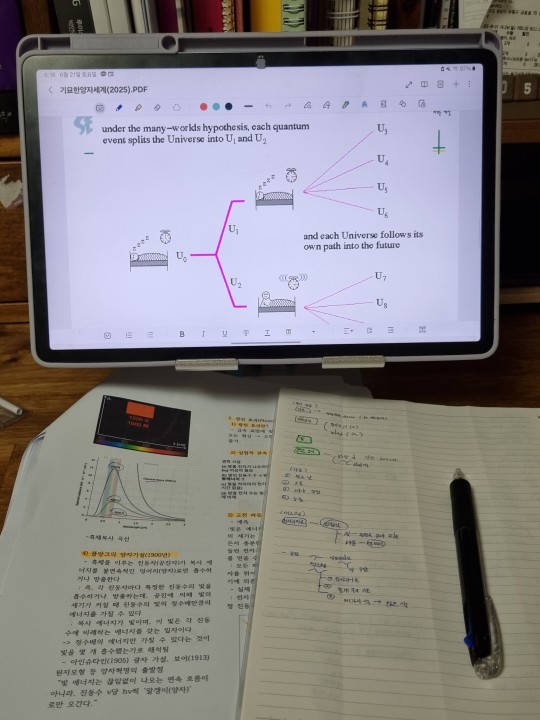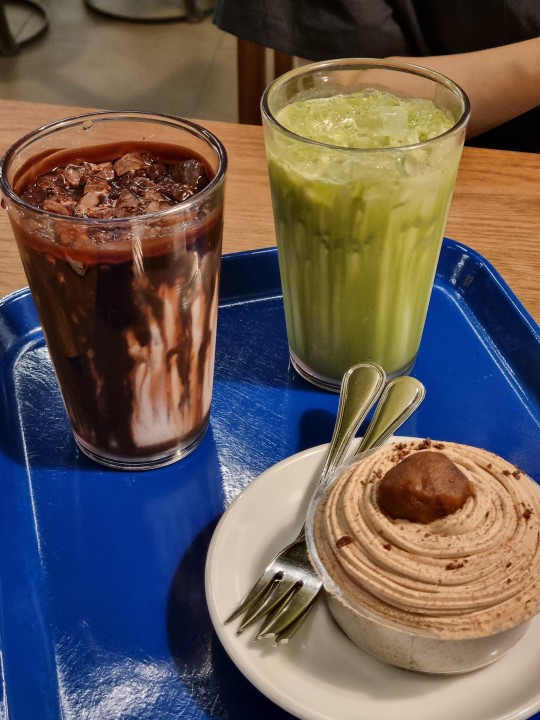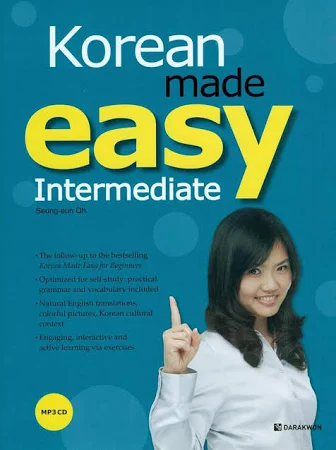#Korean blog
Explore tagged Tumblr posts
Text
”-기는커녕”, ”-는구나”, ”-니/냐?”
-기는커녕, “far from ~ing / let alone,” second, -는구나, “it is really ~,” and third, -니/냐?, “is it ~?”
1. 기는커녕
This grammar is used to express the negation that if the first situation cannot happen, then the second situation, which is more uncomplicated or more straightforward, definitely cannot happen either.
You attach this grammar to verbs, adjectives, and nouns.
Verbs • Adjectives + 기는커녕
Nouns(without a final consonant) +는커녕 Nouns(with a final consonant) +은커녕
First, -기는커녕 means “instead of, let alone, never mind.”
“Far from …, let alone …,” “Not even …, much less ….” It highlights that the first, easier thing is already impossible or untrue, so the following statement—usually stronger or more extreme—goes without saying.
How to form:
Verb stem + -기는커녕 Noun + 은(는)커녕
Nuance: Very emphatic. The clause before -기는커녕 is typically negative (explicitly or implicitly) and sets up a contrast that intensifies in the second clause.
Examples
운동하기는커녕 집 밖에도 안 나가고 있어. “I don’t even go outside, let alone exercise.”
월급을 모으기는커녕 빚만 늘었어요. “Far from saving my salary, I’ve only racked up more debt.”
그 영화는 재미는커녕 지루하기만 했어. “That movie was boring—entertaining it was not.”
More Examples
Example 1 저는 공부를 잘하기는커녕 학교도 잘 안 가는데요. I am far from being able to study well, let alone go to school.
Here, 공부를 잘하다 means “to study well.” You attach -기는커녕 to the stem to make 공부를 잘하기는커녕, “far from being able to study well.”
Example 2 어제 선을 봤는데 그 사람은 멋있기는커녕 매너도 없었어. Yesterday, I went on an arranged date, but he had no manners, let alone be good-looking.
Example 3 어제는 너무 바빠서 잠은커녕 샤워도 못 했어요. I was so busy that I could not take a shower, let alone sleep.
2. 는구나
Verbs + 는구나
Adjectives + 구나
Nouns(without a final consonant) + 구나 Nouns(with a final consonant) + 이구나
[Past tense] Verbs • Adjectives + 았/었구나 Nouns + 였/이었구나
The second grammar, -는구나 means “(sub) is really ~” or “(sub) is actually ~” in a casual way of speaking. You mainly use this expression in conversations.
This grammar conveys surprise about a newly learned fact.
What it does:
Exclamatory ending used when the speaker realises something new, is surprised, or re-confirms a fact. Comparable to “Oh, so…,” “I see that…,” “Wow, …!”
For verbs, you attach -는구나 to the verb stem. For example, 가다 will be 가는구나 “you are going!” 먹다 “to eat” will be 먹는구나 “you are eating!”
For adjectives, you attach -구나 to the word stem as it is.
For nouns, you attach -(이)구나, depending on a final consonant.
The use of the past tense is the same for verbs and adjectives. It is going to be -았/었구나. For the past tense of nouns, you use -이었/였구나, depending upon a final consonant.

How to form:
Action verb stem + -는구나 (present) Past: -았/었구나 Future / guess: -겠구나 Descriptive verbs & copula (이다): stem + -구나 (no -는).
Register: Informal, plain style—used toward oneself, younger people, close friends, children. Not used toward seniors or in formal writing.
Examples
여기가 네 방이구나! “Oh, so this is your room!”
벌써 벚꽃이 피는구나. “Wow, the cherry blossoms are already blooming.”
네가 그렇게 요리를 잘 하는구나. “I didn’t realise you cooked that well!”
Example 1 희진이가 공부를 잘하는구나. 우리 아들은 공부를 잘 못 해요. Hejin can study well. My son is not good at learning.
Example 2 고양이는 참 귀엽구나. 나도 키워 보고 싶다. Cats are adorable. I want to have one as a pet, too.
Example 3 유미는 일본사람이었구나. 한국어를 너무 잘해서 한국사람인 줄 알았지. Yumi was Japanese! Her Korean was so good that I thought she was Korean.
3. 니/냐? (informal question endings)
However, there is a slight difference in nuance. Korean people tend to use ‘-니?’ when they ask with familiarity.
-냐? has a slightly blunt nuance that men usually use. In an insufficient context, it could sound like a speaker looks down on a listener. So, you need to be careful.
You can use ‘-니/냐?’ for verbs, adjectives, and nouns. In the case of verbs and adjectives, you attach -니/냐? to the word stems.
For example, 가다 “to go” will be 가니 “do you go?” 먹다 “to eat” will be 먹니? “do you eat?”
For nouns, you use -(이)니 or -(이)냐? depending on whether a noun has the final consonant or not.
Verbs • Adjectives + 니?/냐?
Nouns(without a final consonant) + 니?/냐? Nouns(with a final consonant) + 이니?/이냐?
[Past tense] Verbs + 았/었니? Verbs + 았/었냐?
The last grammar, ‘-니/냐?’ “is it ~?” conveys a query in casual conversations.
What they do:
Ask questions in plain, intimate speech.
How to form:
Verb / adjective stem + -니 or -냐 (present)/ Past: -았/었니, -았/었냐/ Future: -겠니, -겠냐
Nuance:
•-니 feels slightly softer; traditionally more common among women and in written dialogue, but widely used by all genders today. • -냐 sounds rougher or more blunt; frequently used by men, elders to juniors, or in rhetorical questions (“Who cares?”). • Neither ending is polite—use only with close friends, juniors, or in internal monologue.
Ending Sentence Translation -니 어디 가니? “Where are you going?” -니 숙제 다 했 니? “Have you finished all your homework?” -냐 왜 그렇게 늦었 냐? “Why are you so late?” (sharp tone) -냐 내가 너보다 못할 것 같으냐? “You think I’m worse than you?” (rhetorical)
Example 1 요새 한국어 공부하니? 방에 한국어 책이 있던데? Have you been studying Korean recently? You had Korean books in your room.
Example 2 이번��� 새로 데뷔한 아이돌 어때? 멋있냐? How is the new idol who made his debut this time? Is he cool?
Example 3 지금 마시고 있는 게 뭐야? 콜라니? 커피니? What is it that you are drinking now? Is it coke? Or coffee?
Example 4 밥 먹었니? Did you eat something?
#korean grammar#korean#korean language#korean langblr#korean studyblr#koreanblr#korean study#learn korean#study korean#learning korean#studying korean#한국어#한국어 공부하기#한국어 배우기#한국어공부중#한국어 문법#문법#studyblr#korean blog#studygram
2 notes
·
View notes
Text

Let's check out some best Korean traditional food
Kimchi: The Heart and Soul of Korean Cuisine
It would be impossible to discuss Korean cuisine without discussing kimchi. This traditional Korean food has a history extending back more than 2,000 years to the Shilla Dynasty. People usually use cabbage or radishes for kimchi. All the ingredients are usually seasoned with salt, chili pepper flakes, garlic, ginger, and other herbs and spices. The end result is a dish that Koreans adore with every meal because it is sour, hot, and pungent. Due to its probiotic nature, kimchi is not only delicious but also has several health advantages.
Korean Fried Chicken: The Crispy Delight of Traditional Korean Food
Korean fried chicken recreates the classic American fast food in its own special way. Unlike its American equivalents, double-fry the chicken in vegetable oil before covering it in a sweet-spicy sauce. As a result, the inside of the meat is extremely moist. And the lightly battered skin is crispy and low in fat. Korean Fried Chicken is a famous late-night treat with beer.
Tteokbokki- Red Rice Cakes
Tteokbokki is a beloved traditional Korean food that has become a popular street food dish across the country. It features chewy rice cakes, known as tteok, cooked in a spicy sauce, creating a flavorful and satisfying meal. Tteokbokki is known for its unique combination of heat, sweetness, and umami flavors.
#korean tradition#Korean food#Jeju Dongmun Traditional Market 동문재래시장#traditions#korean food#korea food#korea guide#korea lifestyle#korea eats#korean vlog#korean blog#korean#kimchi#tteokbokki#rice cakes
8 notes
·
View notes
Text










MADE IN KOREA
PARK SEO HAM
PARK JAE CHAN
#MADE IN KOREA#KOREAN BLOG#SOUTH KOREAN BL SERIES#SEMANTIC ERROR#CHU SANG WOO & JANG JAE YOUNG#THEIR FIRST OFFICIAL MEETING#My GIFS#MYGIFSET#MY-GIF-EDIT#BL-BAM-BEYOND FAMILY OF BLOGS#From My Main Blog: BL-BAM-BEYOND#From A SEMANTIC ERROR APPRECIATION POST
3 notes
·
View notes
Text
Korean Drama Mother and Mom Ending (Spoilers!!!)
#asia#asian#asian drama#asian drama blog#asian drama review#asian drama reviews#asian drama reviews blog#asian series#asian tv#asian tv series#asian tv series review#blog#blog post#k drama#k drama blog#k drama review#k drama review blog#k drama reviews#k drama reviews blog#kdrama#kdrama blog#kdrama review#kdrama review blog#Kdrama reviews#kdrama reviews blog#kdrama series#kdrama tv#korea#korean#Korean blog
0 notes
Text

#aesthetic#pink#coquette#girlblogging#girlhood#moodboard#korean#hyper feminine#makeup#femininity#divine feminine#im just a girl#i am just a girl#just girly thoughts#just girly posts#just girly things#girly blog#girly#girly aesthetic#ribbons and bows#girly things#pink aesthetic#soft aesthetic#soft girl#sparkles#softcore#pastel#pink and white#angel#angelic
7K notes
·
View notes
Text




Hime gyaru short nail inspo ෆ
#agejo gyaru#himegal#himegyaru#himekaji#hime kei#cute nails#gyaru nails#pink nails#nail inspo#gyaru blog#gyrau#gyaru fashion#gaijin gyaru#gyaru aesthetic#pink aesthetic#cute#pink#pink blog#softcore#bling bling#bling nails#japanese nails#korean nails
558 notes
·
View notes
Text


diving into Han Kang, who won the Nobel Prize for literature in 2024 📖 reblog is ok, don’t repost/use
#my photos#han kang#books#bookblr#book blog#asian lit#korean literature#nobel prize in literature#commonplace journal#commonplace#handwriting#journaling#journal#book journal#book cover#literature#studyblr#light aesthetic#light academia#light academia aesthetic#reading journal#reading community#books and reading
501 notes
·
View notes
Text


09.06.2025 [😘]
📁: 카페에서 밀린 과제하기/ Finishing up my pending homework at the cafe
#diary#online diary#student#study aesthetic#study blog#study motivation#study tips#studyblr#journal#daily life#korean cafe#cafe aesthetic#caffeine#cafe#café#matcha#academia aesthetic#classic academia#daily blog#blog post#lifestyle blog#blog#studying#studies#study desk#academy#light#light acadamia aesthetic#light indie#university
162 notes
·
View notes
Text




Seoul / South Korea
#fujifilm#fujixseries#photographers on tumblr#original photographers#slow travel#fujifilmxseries#landscape photography#travel diary#travel photography#wanderlust#seoul#south korea#korean#festival#cherry blossom#cherry blossum tree#travelling#traveling#travel blog#sightseeing#tourism#travel
283 notes
·
View notes
Text



MY DEAREST NEMESIS 그놈은 흑염룡 (2025)
#my dearest nemesis#kdrama#kdramaedit#kdramasource#kdramagifs#kdramadaily#korean drama#korean actor#choi hyunwook#userlab#userheidy#tuseralexa#dailyasiandramas#tvedit#tvgifs#asiancentral#asiandramasource#*#i dont even go here but i saw a man crying so beautifully i had to put it on my blog#literally downloaded just for this 10sec scene#i gotta put me first
332 notes
·
View notes
Text
Interested in some Korean books? (Part 2)
I'll add the links or send them if some messages me. I am willing to negotiate on the price so its reasonable.








#korean vocab#korean grammar#korean#한국어 공부하기#korean language#Korean textbooks#books for sale#Korean study#한국어#korean books#한국어 책#책#studygram#studyblr#study blog#study#koreanblr#korean studyblr#korean langblr#한국어 배우기#langblr#hangul#한글#문법#korean learning#korean blog#study korean#studying korean#learn korean#learning korean
4 notes
·
View notes
Text

JaeYi x SeulGi ver
#friendly rivalry#jaeyi x seulgi#yoo jaeyi#lee hyeri#hyeri#hyeri girls day#chung soobin#kdrama#korean drama#korean gl#sapphic#lesbian#lesbianism#wlw#wlw post#wlw community#wuh luh wuh#wlw blog#wlw love
192 notes
·
View notes
Text






MADE IN KOREA
PARK JAE CHAN
PARK SEO HAM
#MADE IN KOREA#KOREAN BLOG#SOUTH KOREAN BL SERIES#KBL#SEMANTIC ERROR#A SEMANTIC APPRECIATION POST (PRIMARY BLOG POST)#My GIFS#MYGIFSET#MY-GIF-EDIT#BL-BAM-BEYOND FAMILY OF BLOGS#From My Main Blog: BL-BAM-BEYOND
2 notes
·
View notes
Text

if you could eat anything right now, what would you eat?
… i’d like some japanese curry for dinner. it’s easy to make and delicious. (๑・̑◡・̑๑)
-♡
#jiraiblr#jirai#jirai kei#jiraiblogging#jiraiya#jirai girl#landmine jirai#mentally fucked#jiraikei#eedee tumblr#jirai lifestyle#jirai joshi#jirai posting#bpd#bpd blog#actually bpd#obslove#obsessive love#kawaii angel#kawaii#korean jirai#korean#meow meow#dont be weird#im a minor#needy streamer overload#rpg#yan#girls with piercings
163 notes
·
View notes
Text

⋆˚𝜗𝜚˚⋆
#aesthetic#pink#coquette#girlblogging#girlhood#moodboard#korean#hyper feminine#makeup#femininity#i am just a girl#im just a girl#just girly posts#just girly thoughts#just girly things#just a girlblog#girly blog#girly things#girly#ribbons and bows#girly aesthetic#pink aesthetic#soft pink#soft aesthetic#soft girl#sparkles#pastel#softcore#pink and white#angelic
1K notes
·
View notes
Text


28.05.2025 [🥲]
🎫: 미술 전시 보러 가기/ The day I went to the art exhibition
#diary#online diary#student#study aesthetic#study blog#study motivation#study tips#studyblr#journal#daily life#korean cafe#cafe aesthetic#caffeine#cafe#café#daily list#light#lifestyle blog#daily blog#blog post#blogger#blog#studying#matcha#studies#students#academia aesthetic#classic academia#academy#study desk
155 notes
·
View notes